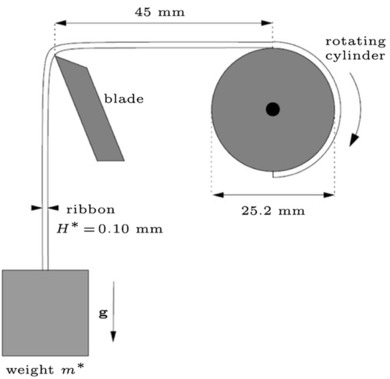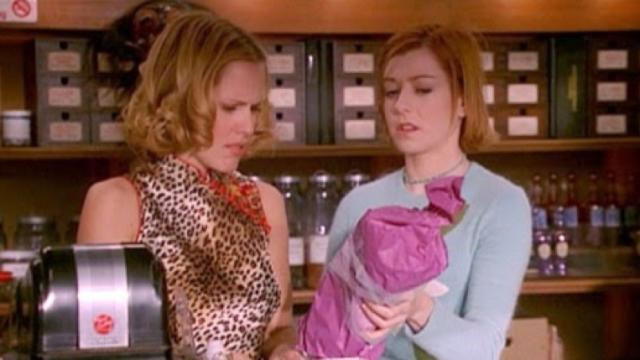Most of us know how to get a ribbon to curl, by swiftly pulling a scissor blade across the surface. You’ve probably heard that the faster you do this, the tighter the curl. Physics begs to differ.
A slower movement — combined with a sharp blade and just the right amount of tension on the ribbon — produces optimal curls, according to the latest experiments by an international team of physicists. A paper about this work appeared in the Proceedings of the National Academy of Sciences last month. Lead author Anne Juel, of the University of Manchester in England, described the findings at a meeting of the American Physical Society last week.
Back in 2007, co-author Buddhapriya Chakrabarti of the University of Durham performed his own experiments to test the commonly held wisdom that the faster you scrape the blade, the tighter the ribbon will curl. He even built a special motorised curling apparatus for this purpose.

Juel et al./University of Manchester
He attached plastic ribbons — the kind of material you might find in transparencies (for anyone who still uses transparencies) — to the motor and let them hang over a metal rod. Then he suspended various weights on the end of the ribbon to pull it taut and apply different amounts of pressure, and let the motor pull it across.
Chakrabati concluded that, contrary to conventional wisdom, you get a much tighter curl “if you hold the tension constant and if you make it go slower,” he told Scientific American.
The reason a ribbon curls in the first place is that the outer layer stretches and expands more than the inner layer being pressed against the scissor blade. That’s also why the ribbon must be held taut: doing so pulls the molecules in the plastic apart. Do this at a slightly slower speed, and it makes it harder for the plastic ribbon to snap back to its prior shape. It relaxes into a nice tight curl instead.
When Juel heard about Chakrabati’s work, she contacted him about collaborating on additional studies. They used a similar apparatus, with a ribbon wound onto a cylinder — the better to drag it across a sharp blade.
The new experiments revealed that a sharper blade will stretch the ribbon’s outer layer even more. Increasing the tension on the ribbon by adding heavier weights also resulted in tighter curls — up to a point. Beyond a certain threshold, that deformation will spread too deep into the ribbon, dampening the curling effect. That makes sense: it’s the difference between the inner and outer layers, after all, that results in curls in the first place.
Juel, Chakrabarti, and their colleagues also came up with a predictive mathematical model for optimal ribbon curling, balancing such aspects as the ribbon’s structure, blade sharpness, how much tension is applied to the ribbon, and how quickly the blade is pulled across the ribbon. Basically, “The tightest curl will be obtained when you manage to apply a load that will bring yield to exactly half the thickness of the ribbon,” Juel said at the meeting.
Fair warning: not all ribbons are created equal. Satin ribbons, for instance, are woven, unlike plastic ribbons, which are a continuous sheet. So satin ribbons can’t be stretched or deformed in the same way. Running your scissor blade along a satin ribbon will just ruin it. And different types of ribbons will have different optimal tensions for the tightest curls.
